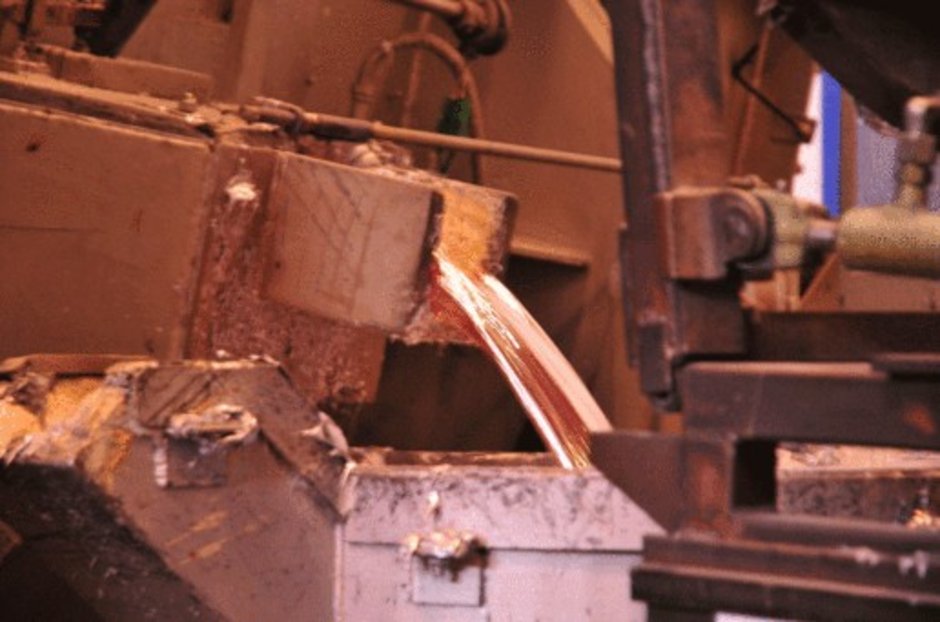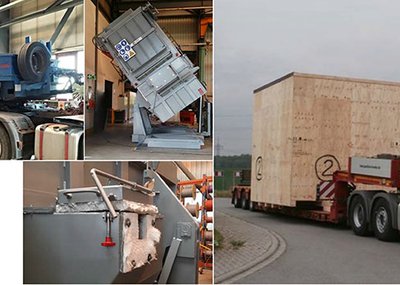ZPF Therm Maschinenbau GmbH has just supplied six gas-fired aluminium smelting and holding furnaces, each with a smelting capacity of three tonnes per hour, for the newly-built smelting plant at BMW’s works in Landshut. The furnaces form the core of the new smelting plant.
“We are very proud that the light alloy foundry at BMW’s Landshut works is deploying ZPF’s energy-efficient furnaces in the course of their pioneering production process change from liquid to solid metal delivery”, says Holger Gross, general manager of the ZPF Group.
The furnaces delivered to BMW’s Landshut factory come from ZPF’s ST series and are therefore the big furnaces in the product range – and not only in terms of their smelting capacity. Their size, and the fact that each furnace weighs around 70 tonnes, also meant that not only delivery to the site but also manoeuvring them into place on the upper floor of the smelting plant presented a major logistical challenge.
The ST series features an enclosed furnace system and inverted exhaust gas routing. The smelt burners heat the melting shaft, which causes swirling in the hot gases in the shaft. In order to make use of the remaining energy, the hot gases are subsequently routed over the holding bath. The holding bath is therefore heated by residual heat from the smelting process. The bath burner only cuts in to regulate the temperature or purely in holding mode. The hot gases reach the reburn zone behind the smelting zone where thermal postcombustion takes place. Practically all organic contaminants are broken down by the high temperature and a correspondingly long dwell time. Thermal post-combustion is the optimum process in relation to air quality because apart from external elements of nitrogen, sulphur and halogens the exhaust gases are completely converted to water and carbon dioxide. No additional fuel is required for reburning. The necessary 750°C to 1000°C come exclusively from the smelting process.
The purified exhaust gases (clean gases) are discharged from the furnace behind the post-combustion zone. No additional air filtering equipment is required. These extremely hot gases can be used to further optimise energy management (heat recovery, water heating, cold production, factory heating, preheating chambers for aluminium).
Hydraulic loading systems are used to load the smelting plants. The material containers used at BMW are transported into the loading system in a filling station. Between each of the three pairs of furnaces there is a loading system which fills either the furnace to the left or the right with recycled material as required. The compact packages of aluminium are placed directly on the smelting ramp by a fork lift truck. This permits an additional large lift door on the front of the furnace.
In ZPF’s estimation, two major trends can be detected amongst vehicle manufacturers. Firstly, the alloy needed for casting will in future be supplied mainly as solid metal and less as liquid metal. Secondly, manufacturers no longer send back most of the recycled material which accumulates during casting to a refining works but melt it down again in their own smelting and holding furnaces. Both developments point to growth potential for the ZPF Group.
auch verfügber in <link record:tt_news:12545 internal-link>![]()
![]()
###COMPANY_LINK### <link linktosingle>ZPF therm Maschinenbau GmbH



